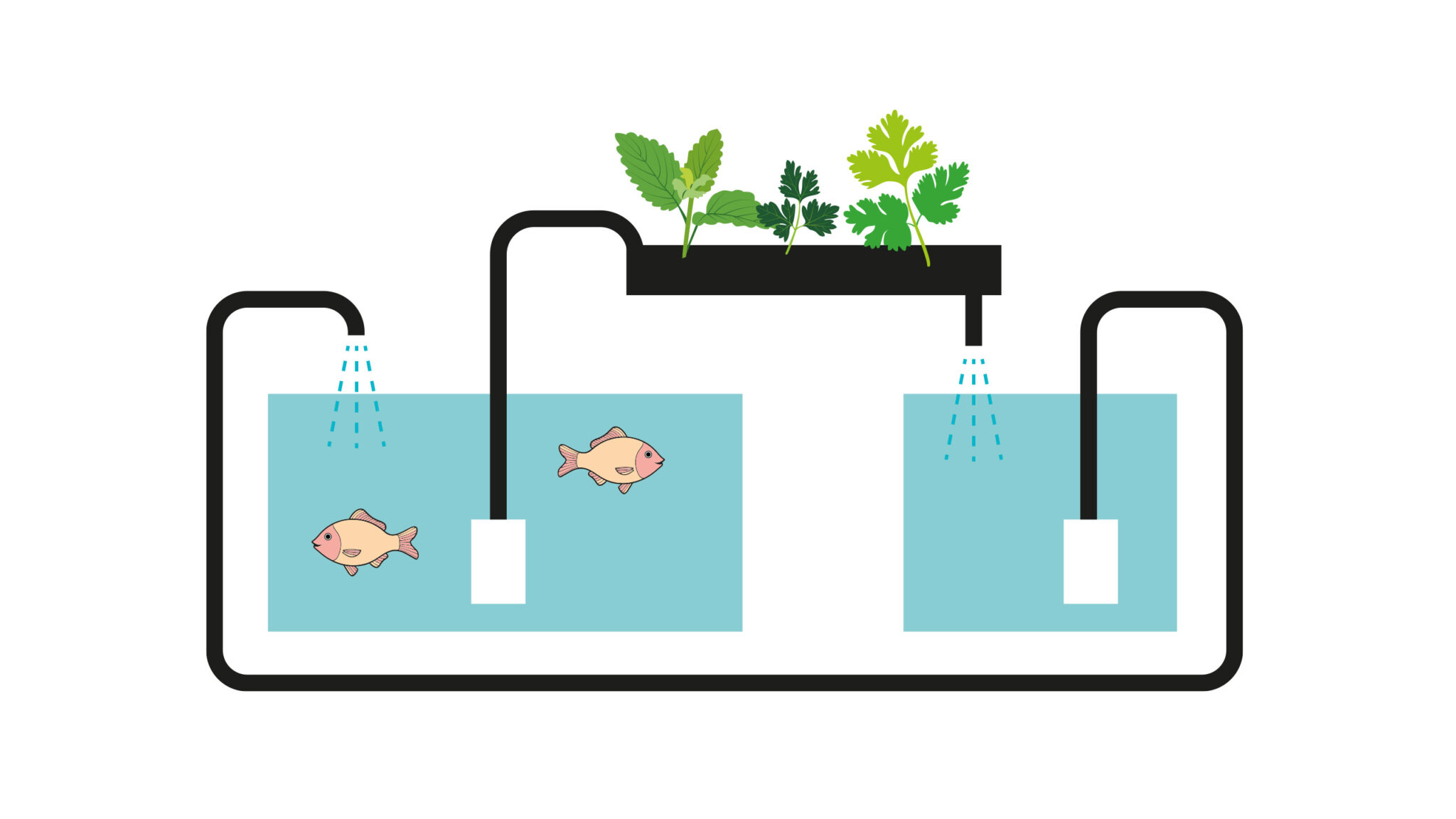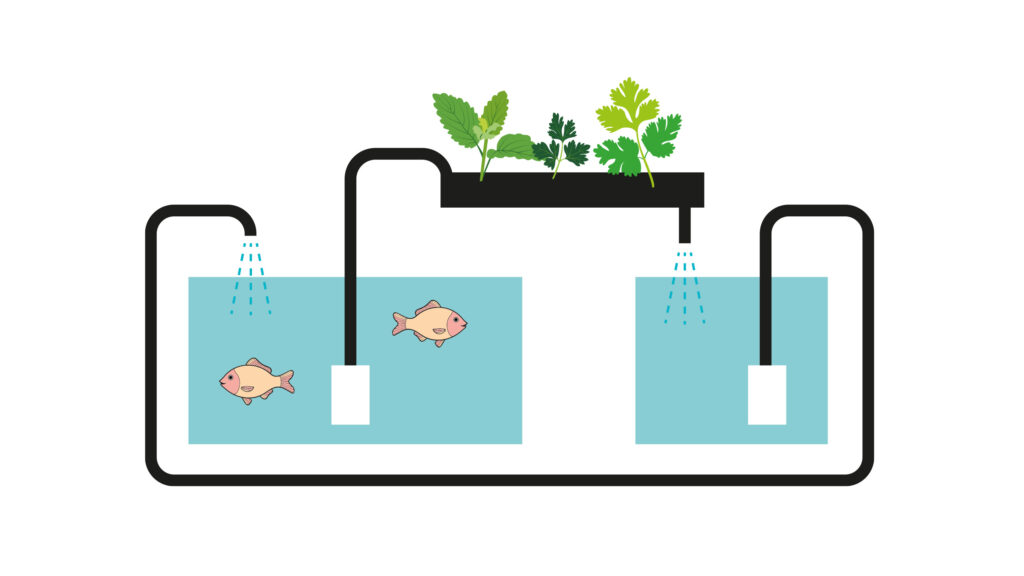
After passing through a bio-filter water full
of nutrients is circulated by a pump.
Plant food (nitrate) is made from the
conversion of solid fish waste by bacteria.
Clean water flows back into the system
Pumps powered by renewable energy
pump the water back into the fish tank.
Aquaponics is an environmentally friendly method that minimizes water usage and eliminates soil erosion. By reducing reliance on traditional farming practices, we contribute to a more sustainable and resilient food production system.
Our plants receive a constant supply of organic nutrients, resulting in vibrant flavors, exceptional quality, and enhanced nutritional value.
Beneficial bacteria play a critical role in aquaponics by converting toxic ammonia into less harmful nitrates, a process known as nitrification. This process occurs in two stages:
These bacteria colonize the surfaces within the system, particularly in the biofilters. The establishment of a robust bacterial colony is crucial for the system’s stability and efficiency.
Plants absorb the nitrates and other nutrients from the water through their roots. As they take up these nutrients, they clean and filter the water, which is then recirculated back to the fish tank. This nutrient uptake supports plant growth and productivity, allowing for the cultivation of a wide variety of crops. The choice of plants can range from leafy greens and herbs to fruiting vegetables, depending on the system’s design and environmental conditions.
Aquaponics is an environmentally friendly method that minimizes water usage and eliminates soil erosion. By reducing reliance on traditional farming practices, we contribute to a more sustainable and resilient food production system.
Our plants receive a constant supply of organic nutrients, resulting in vibrant flavors, exceptional quality, and enhanced nutritional value.

Beneficial bacteria play a critical role in aquaponics by converting toxic ammonia into less harmful nitrates, a process known as nitrification. This process occurs in two stages:
These bacteria colonize the surfaces within the system, particularly in the biofilters. The establishment of a robust bacterial colony is crucial for the system’s stability and efficiency.
Plants absorb the nitrates and other nutrients from the water through their roots. As they take up these nutrients, they clean and filter the water, which is then recirculated back to the fish tank. This nutrient uptake supports plant growth and productivity, allowing for the cultivation of a wide variety of crops. The choice of plants can range from leafy greens and herbs to fruiting vegetables, depending on the system’s design and environmental conditions.
Green Manor Farm, Inc
246 Fresh
The Mall – Station Hill
St. Michael | Barbados
Green Manor Farm, Inc
246 Fresh
The Mall – Station Hill
St. Michael | Barbados

This site is protected by reCAPTCHA and the Google Privacy Policy and Terms of Service apply.

Good to hear from you!
This site is protected by reCAPTCHA and the Google Privacy Policy
and Terms of Service apply.

Yes, stay in the loop!

Yes, stay in the loop!